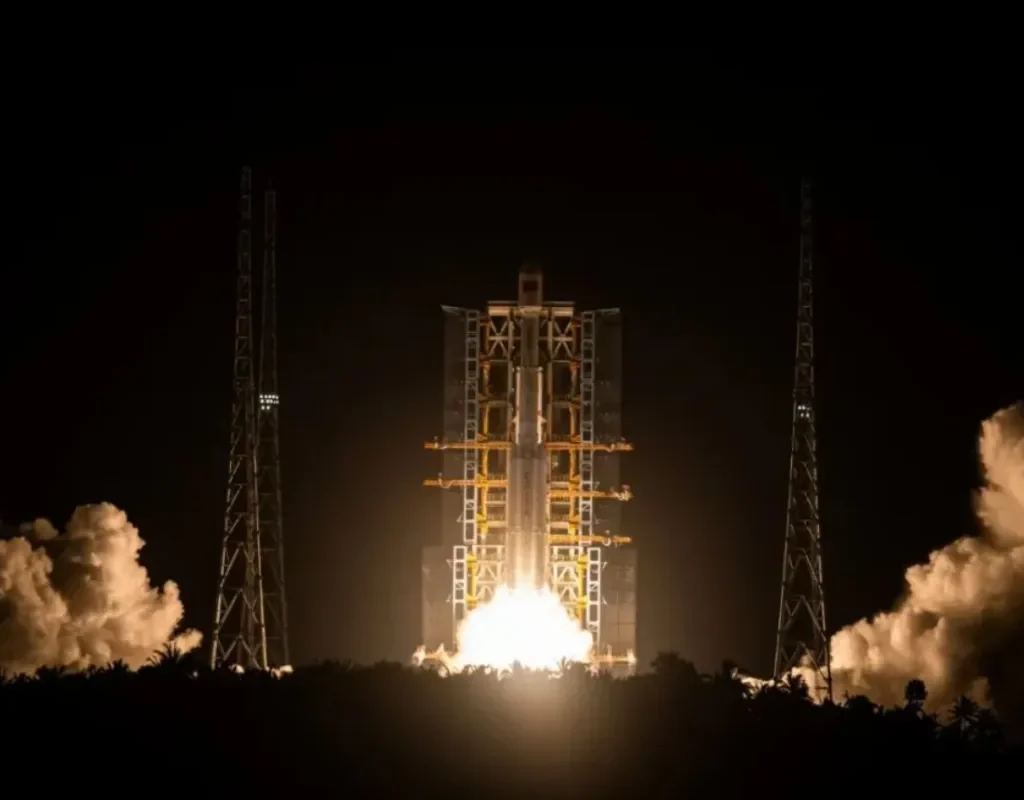China has intensified its space launch schedule with two recent missions, deploying a Long March 7A rocket to geosynchronous orbit and a Ceres-1 solid rocket from a sea platform into low Earth orbit, marking the country's 28th and 29th orbital launch attempts this year.
A Long March 7A lifted off from the Wenchang Satellite Launch Center on Hainan island at 7:50 a.m. Eastern (1150 UTC) on May 20, successfully placing the ChinaSat 3B (Zhongxing-3B) communications satellite into orbit, according to the China Aerospace Science and Technology Corporation (CASC). The satellite, developed by the China Academy of Space Technology (CAST), is designed to deliver voice, data, radio, and television transmission services. CASC did not release further technical details or images of the satellite.
Though described as a civilian communications platform, the limited disclosure surrounding ChinaSat 3B has raised questions about its potential military use. Earlier ChinaSat models have been speculated to support secure communications for the People's Liberation Army.
The Long March 7A, measuring 60.1 meters in height and 3.35 meters in diameter, is a kerosene-liquid oxygen rocket capable of delivering up to 7 metric tons to geosynchronous transfer orbit (GTO). Viewed as a successor to the older, hypergolic Long March 3B, the 7A has launched twice in 2024, with CASC indicating further missions are planned for this year.
Just a day earlier, on May 19 at 3:38 a.m. Eastern (0738 UTC), a four-stage Ceres-1 rocket successfully launched four Tianqi Internet-of-Things (IoT) satellites from a sea platform off Shandong province. The mission, conducted by Beijing-based commercial firm Galactic Energy, supports Guodian Gaoke's growing Tianqi constellation, aimed at providing global narrowband IoT connectivity.
The launch was Galactic Energy's fifth sea-based Ceres-1 mission and 20th overall, with a record of 19 successes and one failure. The 20-meter-long Ceres-1 can transport up to 400 kilograms to low Earth orbit.
Galactic Energy is preparing to introduce two new launchers in the coming months: the Ceres-2, which will deliver 1,600 kilograms to a 500-kilometer LEO, and the larger Pallas-1, a kerosene-liquid oxygen rocket designed to lift up to 8,000 kilograms to a 200-kilometer orbit. The first Pallas-1 launch is expected no earlier than August.
China's launch cadence continues to rise, with a Kinetica-1 solid rocket from CAS Space expected to fly early May 21 and the Tianwen-2 asteroid sample return mission slated for May 28 from Xichang.
